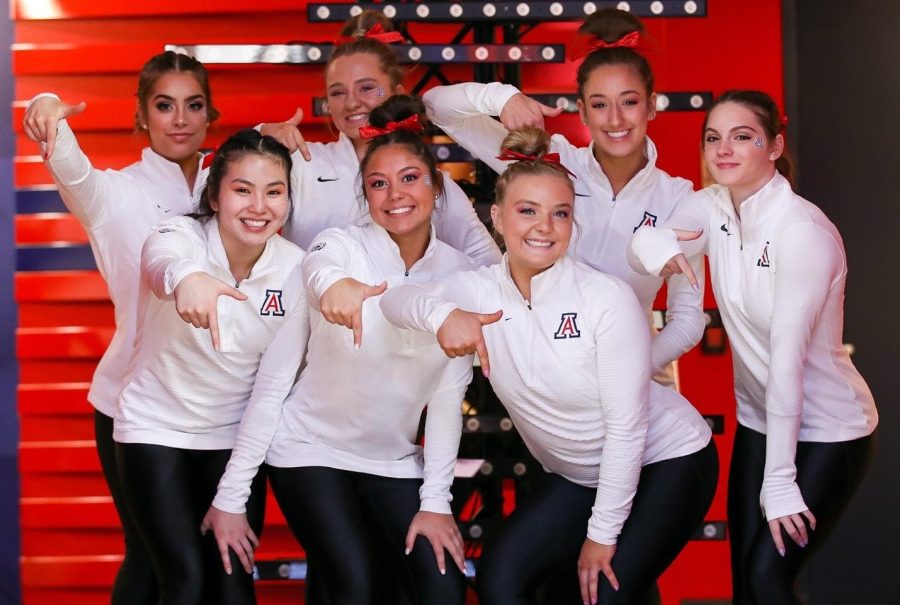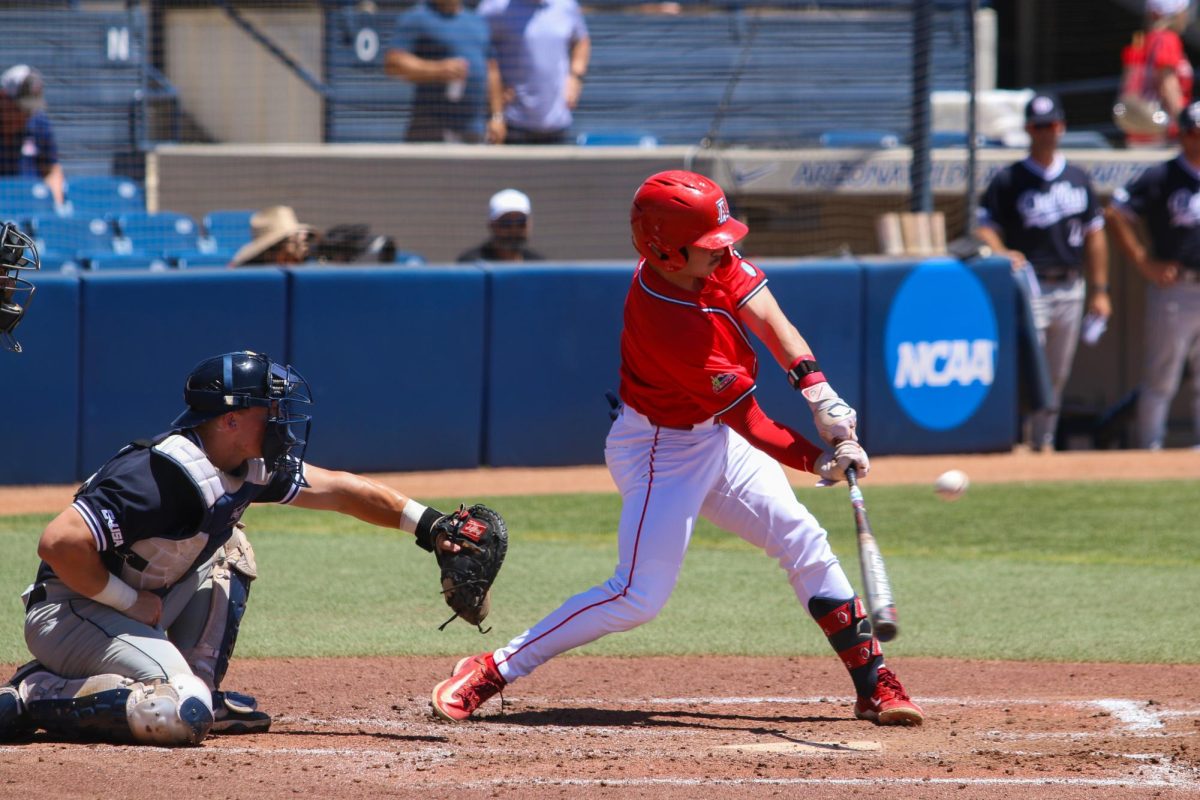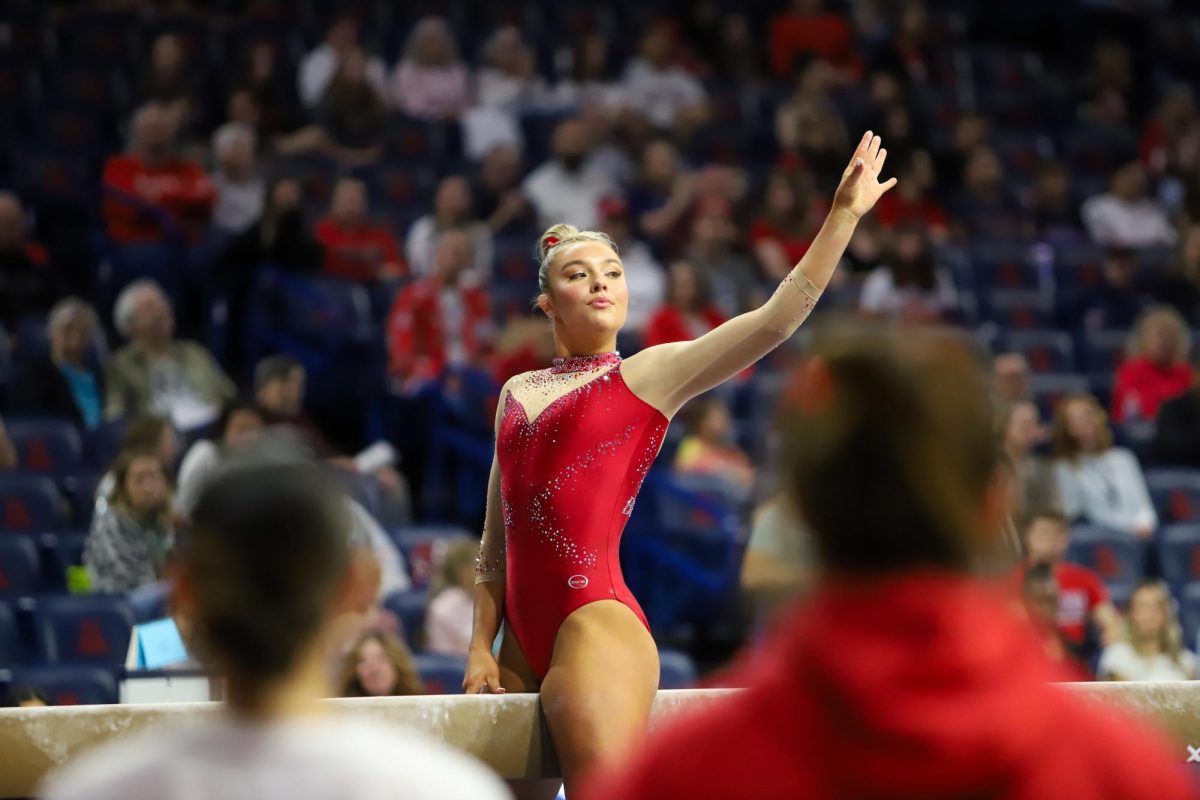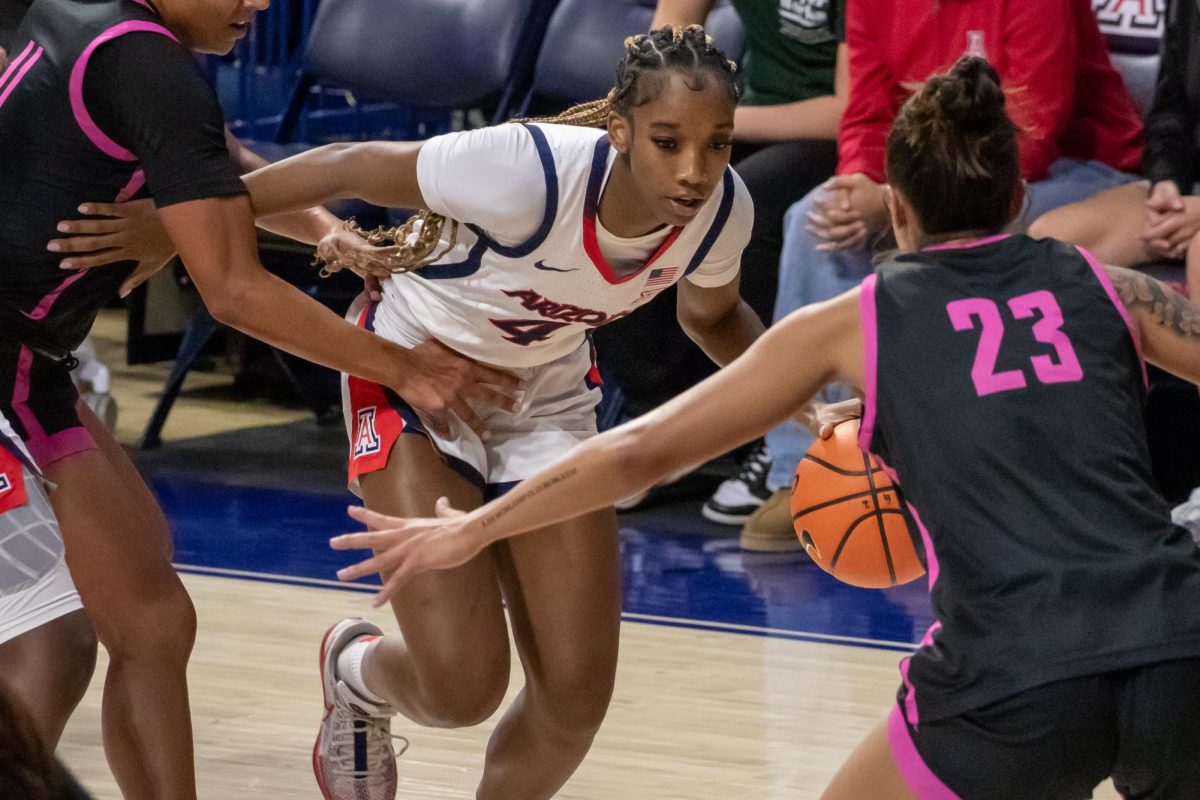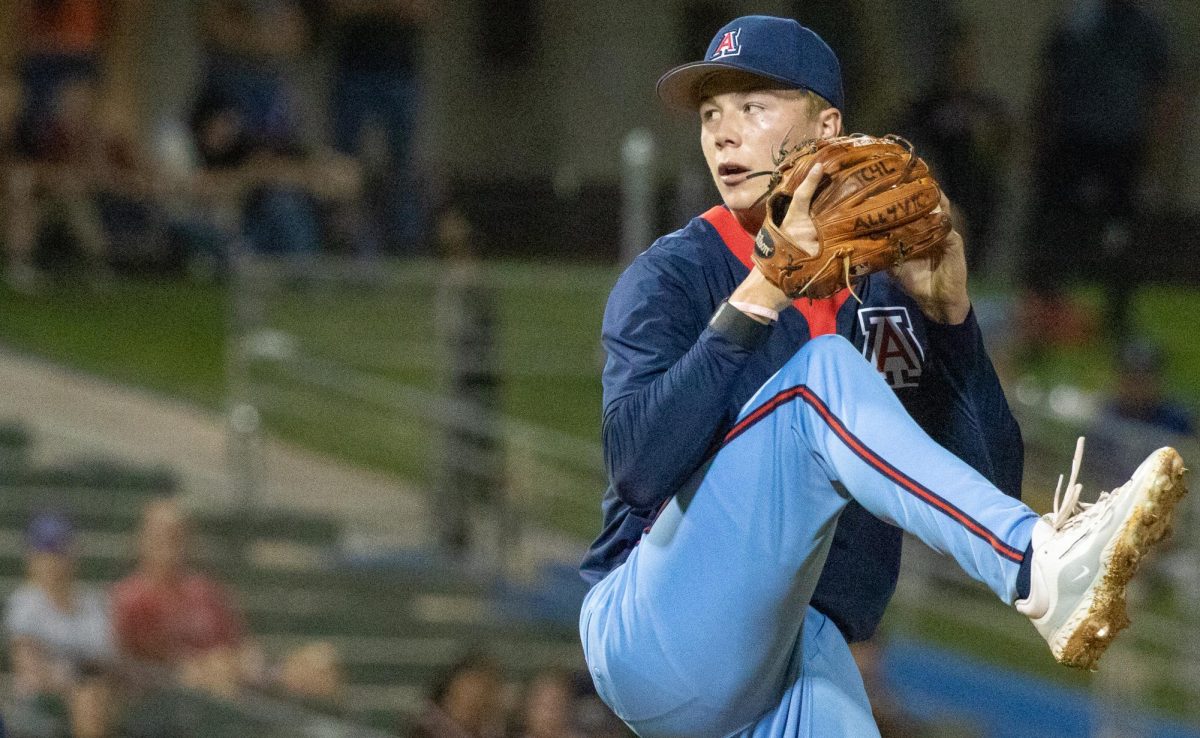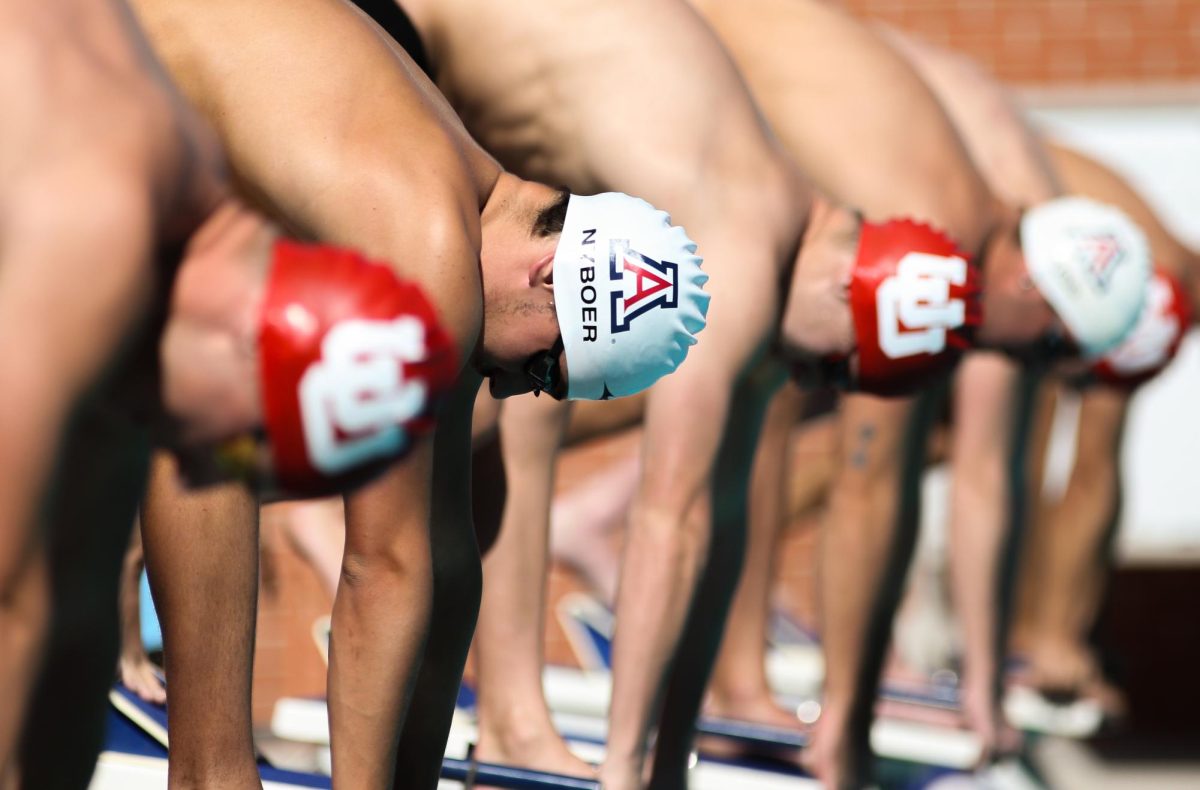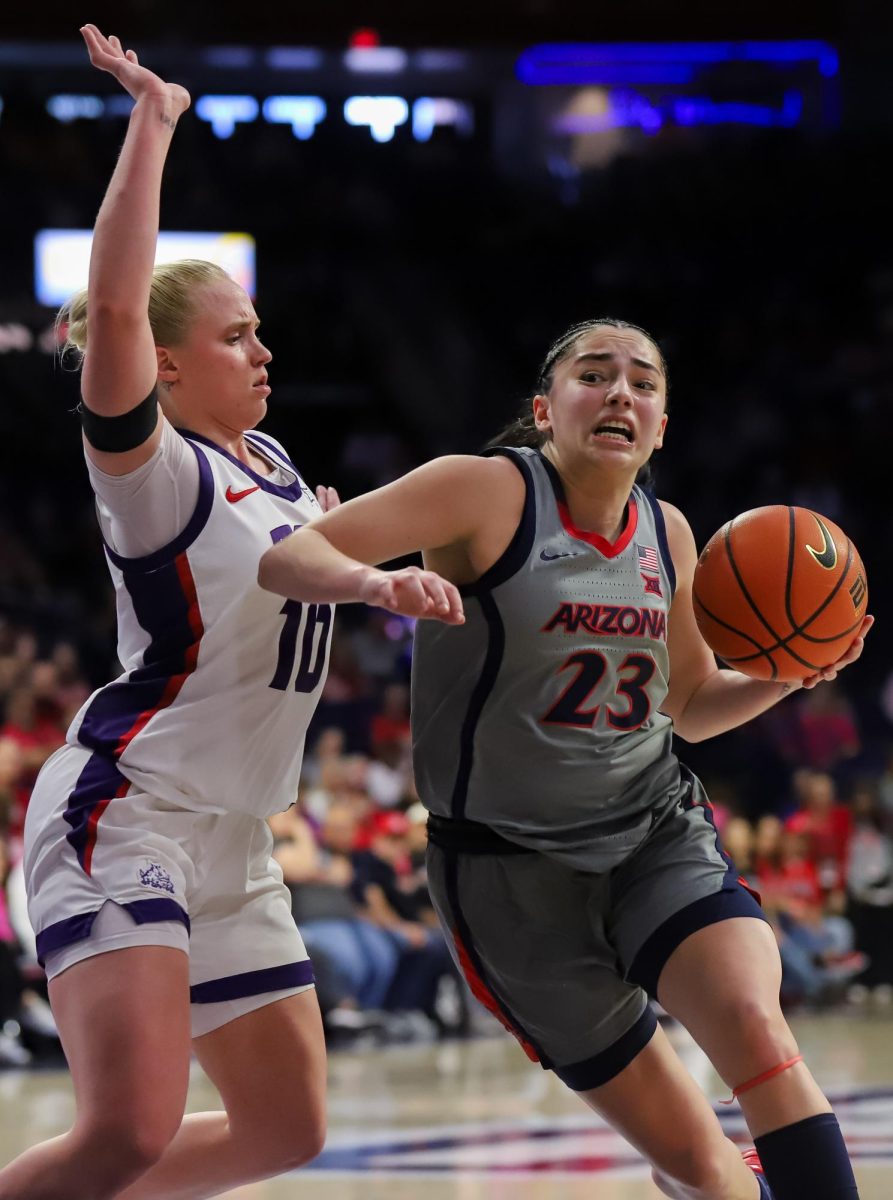The spread of COVID-19 has posed many problems throughout the sports world. College sports were affected by COVID-19 cutting the season off. In an effort to keep sports relevant, University of Arizona Athletics gave the green light to coaches and student-athletes to start training. But now everything is different.
UA gymnastics normally starts mandatory workouts at the beginning of July, but with the arrival of COVID-19, they were postponed until Thursday, Oct. 8.
GymCats weren’t able to use UA athletic facilities like the gymnasium, weight room and training room, forcing them to work out at home on their own.
Libby Orman, a sophomore gymnast, went home back in March when the NCAA canceled all sports events. From March to June, Orman was not doing gymnastics for the first time in her life since she started in the sport.
“I’ve never really gone past a week without even doing gymnastics ever, so it was quite a change,” said Orman, adding that it was a mentally stressful time.
Coaches were allowed to send workouts or tips to keep their athletes in shape. Orman mentions that she didn’t like running, but during quarantine, she did it a lot. Now her perspective has changed.
“[Running] gave me something to do other than gymnastics,” Orman said.
Once UA Athletics allowed the use of the Mary Roby Gymnastics Training Center, the GymCats were separated into two training groups to follow the new protocols.
“I was a little upset with this just because I wanted to be back in the gym doing what I love with my best friends,” said Danielle Nosek, a UA sophomore gymnast majoring in physiology and medical sciences, via email.
Sirena Linton, a UA sophomore gymnast majoring in nutritional sciences, adds that not being able to train together with her teammates was hard.
“Sometimes there feels like a divide and we have to work extra hard to encourage bonding and dynamic in a safe way,” said Linton, via email.
Just a couple of weeks ago, they moved into one training group.
As part of the new protocols, athletes have to wear masks during workouts and practice social distancing.
“I think that the protocol is good because it allows us to train in one group,” Nosek said.
Upon arrival to practice, GymCats have to complete and share their wellness check with their trainer, Samantha Yeoman, to ensure that they are not showing symptoms of the virus. They received clean, Dri-FIT masks to start doing the warmup and stretch.
While training in the gym, athletes and coaches are required to wear masks. Additionally, athletes have to sanitize their hands before and after taking turns between each apparatus and clean off every piece of equipment they used as well.
The team trains three hours a day, five days a week. NCAA rules state that student-athletes have to practice 20 hours or less a week.
Currently, GymCats are doing preseason workouts which include more intense workouts than during the competing season. According to Nosek, they are focusing on endurance training so when they have more specific workouts, they are in better condition.
“I personally prefer preseason workouts. The intensity is a little higher, but it is rewarding once you finish each day. You come out feeling stronger, more prepared, and more confident in yourself,” Nosek said.
However, Linton prefers season workouts because she gets to hit her full routines with consistency. During season workouts, training tends to move faster with fewer deductions made in their routines and lower numbers to help conserve their bodies for back-to-back competitions, according to Linton.
“Quality over quantity, I love it!” Linton said.
Orman agrees with Nosek adding that preseason workouts bring everyone closer.
“I just really like preseason because you get to see everyone grow. You get to see what everyone’s capable of doing,” Orman said.
Currently, UA gymnastics is pretty much a brand-new team with eight freshmen, seven sophomores, two juniors and two seniors.
Zaza Brovedani, a UA sophomore gymnast, is motivated by the potential of the team.
“I am excited to see how much we can improve our performances as a team this year,” Brovedani said, via email.
Gymnasts do endless hours of training prior a to performance, with only a few minutes on each apparatus.
“60 seconds to execute perfection on the big stage. To make the unimaginable skills we do, look flawless and effortless,” Linton said.
Although in practice, gymnasts fall and crash sometimes, the goal of showing off the skills they have worked so hard motivate them to continue working.
The behind-the-scenes is not as beautiful as the performance. The falls, calluses, bruises, soreness and aches are part of a gymnast’s daily life.
Follow Diana Ramos on Twitter



